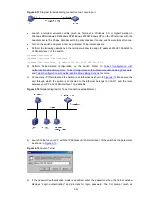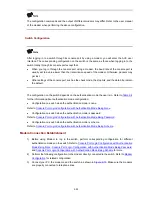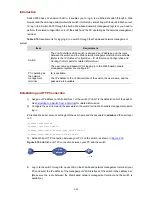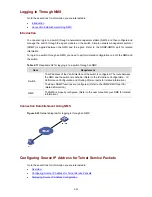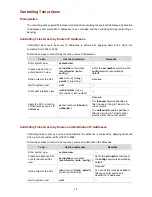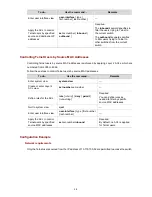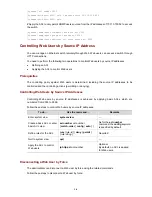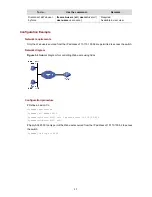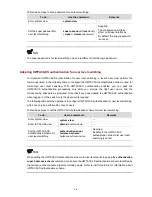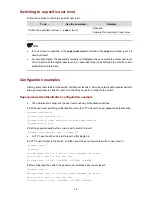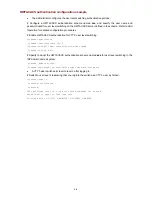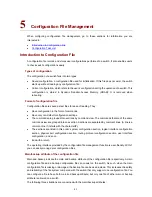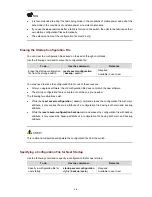
3-2
Prere
e source IP addresses, destination
IP addresses and source MAC addresses to be controlled and the controlling actions (permitting or
denying).
Controlling Telnet Users by Source IP Addresses
C
by s
achieve
ch are
numbered from 2000 to 2999.
F
ol T
addres
Controlling Telnet Users
quisites
The controlling policy against Telnet users is determined, including th
ontrolling Telnet users
ource IP addresses is
d by applying basic ACLs, whi
ollow these steps to contr
elnet users by source IP
ses:
To do…
Use the command…
Remarks
Enter system view
system-view
—
Create a basic ACL or
enter basic ACL view
acl number
acl-number
[
match-order
{
auto
|
config
} ]
As for the
acl number
command, the
word is specified by
config
key
default.
Define rules for the ACL
rule
[
rule-id
] {
deny |
permit
} [
rule-string
]
Required
Quit to system view
quit
—
Enter user interface view
user-interface
[
type
]
first-number
[
last-number
]
—
Apply the ACL to control
yword specifies to
filter the users trying to Telnet to the
The
outbound
keyword specifies to
rrent switch.
Telnet users by source IP
addresses
acl
acl-number
{
inbound
|
outbound
}
current switch.
Required
The
inbound
ke
filter users trying to Telnet to other
switches from the cu
Controllin
Source and Destination IP Addresses
C
y so
e
ACLs, which are numbered from 3000 to 3999.
Follo
T
ti
g Telnet Users by
ontrolling Telnet users b
urce and destination IP address s is achieved by applying advanced
w these steps to control elnet users by source and destina on IP addresses:
To do…
Use the command…
Remarks
Enter system view
system-view
—
Create an advanced ACL
view
g
} ]
As for the
acl number
command,
config
keyword is specified by
default.
or enter advanced ACL
acl number
acl-number
[
match-order
{
auto
|
confi
the
Define rules for the ACL
rule
[
rule-id
] {
deny
|
permit
}
protocol
[
rule-string
]
Required
You can define rules as needed to
filter by specific source and
destination IP addresses.
Quit to system view
quit
—


